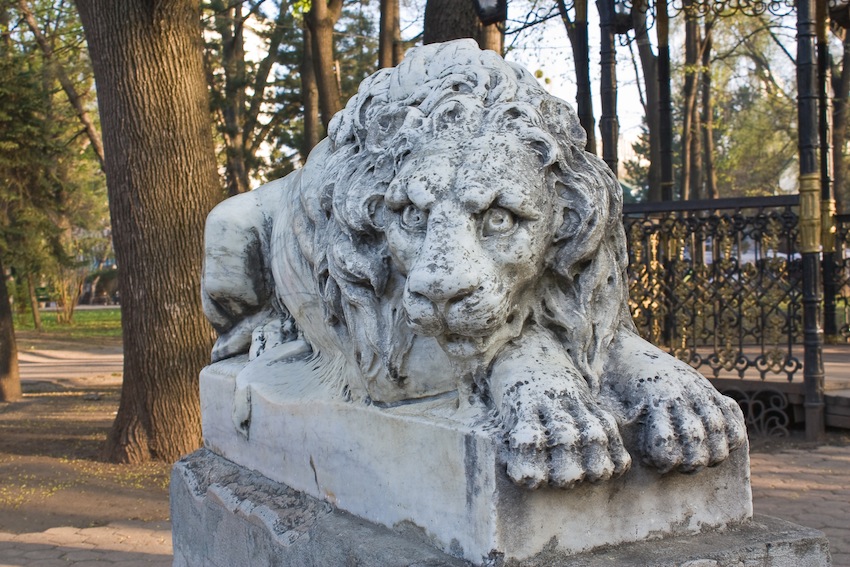The story of the Lions in the Public Garden
Two small marble lions from Chisinau’s Central Park are generally not so visible and not too special for visitors. The alleys of classics, the bust of A. S. Pushkin, the oldest fountain in the city, all these sites located in the center of the park attract the eyes more quickly. And yet, these two lions can be called a contemporary symbol of Chisinau in the last 70 years. This fact is confirmed by the photos in the family albums of most of the citizens, in which these lions are ridden by their small offspring.
No one knows exactly when the Lions appeared in the park. The first mention appeared in September 1943 in the newspaper “Bessarabia”: “On the occasion of the opening of the Municipal exhibition in the City Garden on September 19 of this year (1943), there will be sanctified the busts of illustrious personalities from Bessarabia: B. P. Hasdeu, A. Donici, V. Stroescu and E. Gavrilita, which will be installed in the garden of the former Army Headquarters (the former Governor’s House) on Alexandru cel Bun Boulevard, near the National Theatre. There will also be sanctified two statues of lions, and a statue representing a woman, which will be installed in the next few days in the Public Garden.” It is assumed that the Lions were brought from a destroyed manorial mansion, but it is not known from which one.
A special mystery of the sculptures is the author itself. In the Ukrainian city Nikolaev there are copies of our Lions (in appearance, size and material). There are some more details about the Lions of Nikolaev – initially they decorated the entrance to the House of Admiral N. A. Arkas (Military Governor of Nikolaev in 1871-1881 and commander-in-chief of the Black Sea Fleet). It is curious that the admiral was in Chisinau on official matters several times. Lions arrived in Nikolaev from Italy, where they were made of Rhodes marble by the famous sculptor Ulysses Kambi. After the war, they were transferred to Chestnut Square in the city of Nikolaev, where they remain until this day.
In fact, Lions identical to those from Chisinau are found in several localities in the world . For example, in Venice there are copies made at the beginning of the XIX century. From there we know that they are copies of lions, which are part of the funerary monument of Pope Clement XIII (1693-1769) in Rome. And the original lions are the work of the famous sculptor Antonio Canova, and they were made in 1792. He introduced a special symbolism into the sculpture – the pair of different Lions symbolizes the transition from life (an awakening lion) to death (a sleeping lion).
Sculptor Antonio Canova worked on the tombstone together with several assistants. They worked hard, and one of them complained that all the merits would go to the eminent sculptor, and everyone would forget about their contribution. Antonio Canova listened carefully to the words of the assistant sculptor and allowed him to leave a memory of himself in an original way. If we look at one of the Lions from a certain angle, we will see that it resembles an elephant. And the assistant’s last name was Elephants!
Thus, a Roman urban legend has taken root in Chisinau. And around the city we can find about 100 Lions – sculptures, bas-reliefs, locks at the old gates, etc.! Lions are still present in the life of the city, including national currency.
Note: this information is based on his article Iu.Șveț




